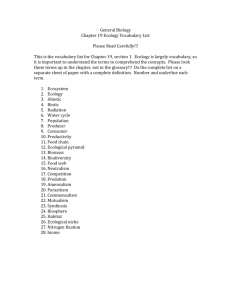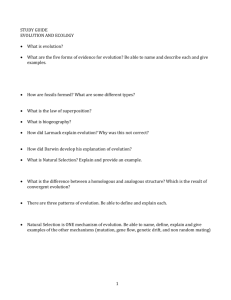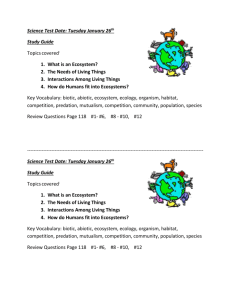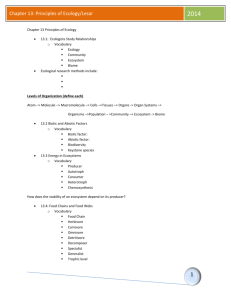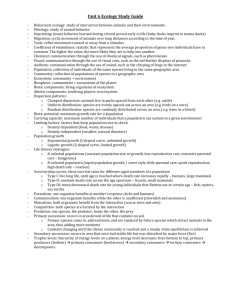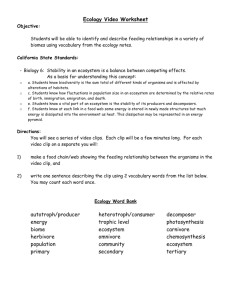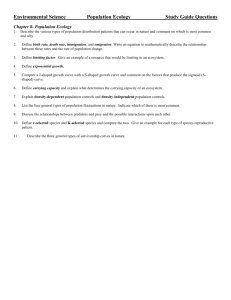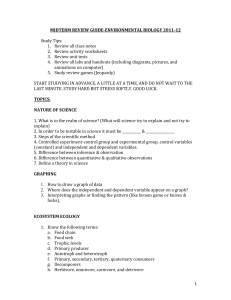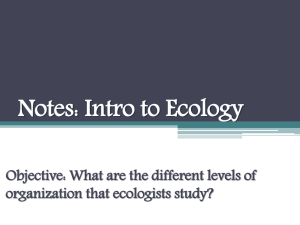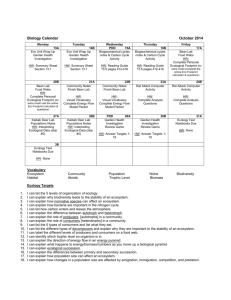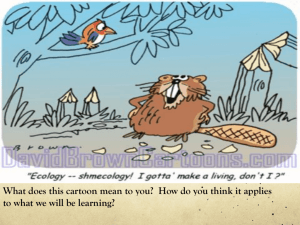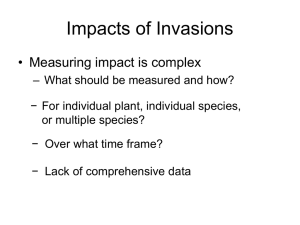AP Biology 2013 - Duluth High School
advertisement
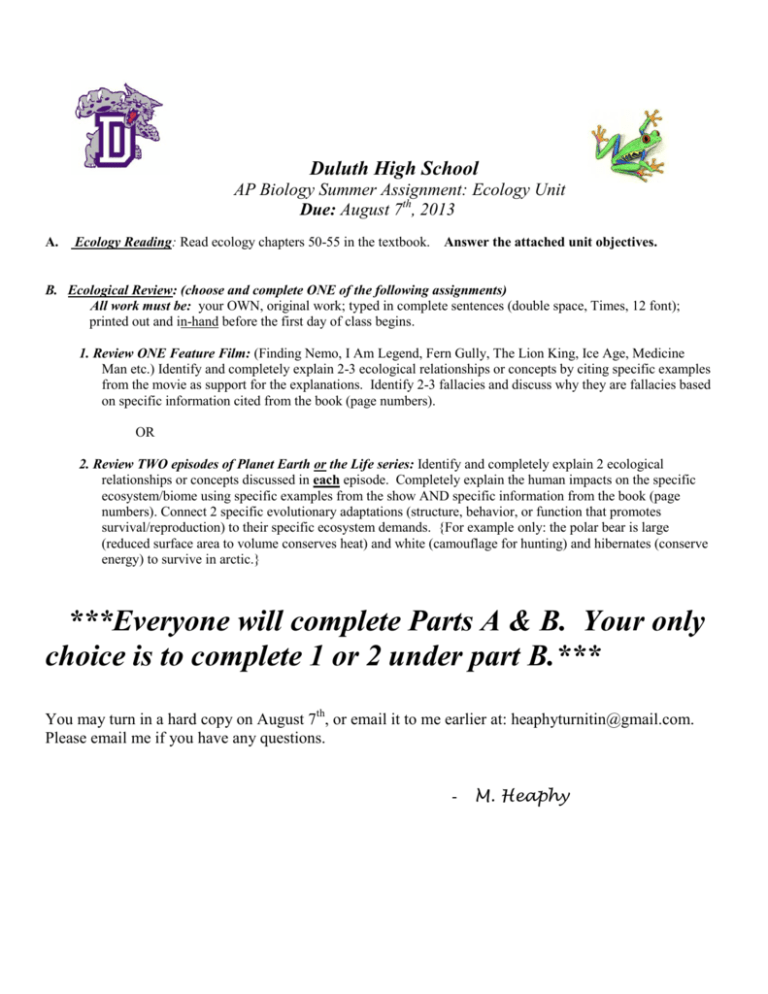
Duluth High School
AP Biology Summer Assignment: Ecology Unit
Due: August 7th, 2013
A.
Ecology Reading: Read ecology chapters 50-55 in the textbook.
Answer the attached unit objectives.
B. Ecological Review: (choose and complete ONE of the following assignments)
All work must be: your OWN, original work; typed in complete sentences (double space, Times, 12 font);
printed out and in-hand before the first day of class begins.
1. Review ONE Feature Film: (Finding Nemo, I Am Legend, Fern Gully, The Lion King, Ice Age, Medicine
Man etc.) Identify and completely explain 2-3 ecological relationships or concepts by citing specific examples
from the movie as support for the explanations. Identify 2-3 fallacies and discuss why they are fallacies based
on specific information cited from the book (page numbers).
OR
2. Review TWO episodes of Planet Earth or the Life series: Identify and completely explain 2 ecological
relationships or concepts discussed in each episode. Completely explain the human impacts on the specific
ecosystem/biome using specific examples from the show AND specific information from the book (page
numbers). Connect 2 specific evolutionary adaptations (structure, behavior, or function that promotes
survival/reproduction) to their specific ecosystem demands. {For example only: the polar bear is large
(reduced surface area to volume conserves heat) and white (camouflage for hunting) and hibernates (conserve
energy) to survive in arctic.}
***Everyone will complete Parts A & B. Your only
choice is to complete 1 or 2 under part B.***
You may turn in a hard copy on August 7th, or email it to me earlier at: heaphyturnitin@gmail.com.
Please email me if you have any questions.
-
M. Heaphy
Unit Objectives: Ecology
1. Explain the importance of temperature, water, light, soil, and wind to living organisms.
2. Compare abiotic and biotic factors.
3. Describe the characteristics of the major biomes: tropical rain forest, savanna, desert, chaparral, temperate
grassland, temperate forest, taiga, and tundra.
4. Define population, community, biome, ecosystem, biosphere, succession, permafrost, and aphotic
5. Describe conditions which may result in clumped dispersion, random dispersion, and uniform dispersion of
populations.
6. Explain how age structure, generation time, and sex structure of populations can effect population growth.
7. Describe the characteristics of populations exhibiting Type I, II, and III survivorship curves.
8. Explain how carrying capacity of the environment affects the intrinsic rate of increase of a population.
9. Explain how density dependent factors affect population growth and how density dependent and independent
factors can work together to regulate population growth.
10. Explain the relationship between species richness, equability, and diversity.
11. Describe the four properties of a community.
12. Describe the competitive exclusion principle.
13. Compare an organism’s fundamental and realized niches.
14. Define predation and identify methods used by plants and animals to reduce predation.
15. Identify the major characteristics of a life history and explain how each affects the 1) number of offspring by
an individual and 2) population.
16. Explain the nitrogen, phosphorous, carbon and water cycles.
17. List and describe four consumer levels of an ecosystem.
18. Distinguish between energy pyramids and biomass pyramids.
19. Define: biological magnification, denitrification, ammonification, nitrification, detritivores, consumers and
producers.
20. Compare Net Primary Productivity (NPP) and Gross Primary Productivity (GPP).
21. Describe the physiological importance of carbon and oxygen in an ecosystem.
22. Understand the physical and biological factors that affect the solubility of dissolved gases in aquatic
ecosystems.
23. Describe a technique for measuring dissolved oxygen.
24. Define primary productivity.
25. Describe the relationship between dissolved oxygen and the processes of photosynthesis
and respiration as they affect primary productivity in an ecosystem.
26. Understand the effect of light and nutrients on photosynthesis
Behavior
27. Define ethology.
28. Distinguish between ultimate causes and proximate causes.
29. Compare behaviors related to each of the following: fixed action patterns, imprinting , conditioning, learning,
insight, mating, habituation and social behaviors.
30. Observe domestic animals and classify the observed behavior as innate or learned.
31. Measure the effects of environmental variables on habitat selection in a controlled
environment and examine the distribution of organisms in a resource gradient.
